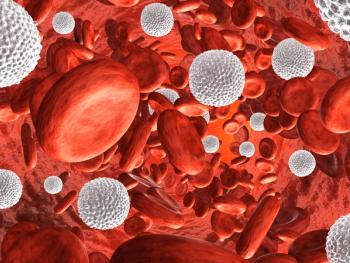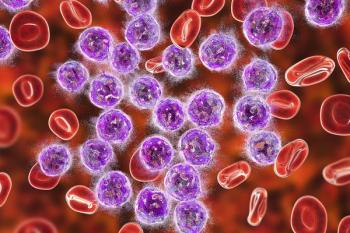
MRD Identifies Relapse Risk in Pediatric ALL Post-Transplant
In a recent study of pediatric ALL, minimal residual disease was able to predict patients who were at increased risk for relapse post-allogeneic stem cell transplantation.
Patients with pediatric acute lymphoblastic leukemia (ALL) who developed a minimal residual disease (MRD) load of 10-4 leukemic cells or more after 60 days post-allogeneic stem cell transplantation were at an increased risk for disease relapse, indicating that these patients should be considered for pre-emptive therapy, according to the
“Our study supports the notion that a threshold of 10-4 leukemic cells may provide justification for additional therapy,” Peter Bader, MD, of Children’s Hospital Charité, Berlin, and colleagues wrote in the Journal of Clinical Oncology. “Our data show that the time frame from the first detection of MRD to relapse provides a therapeutic window for interventional therapy.”
In the study, 113 patients enrolled in the trial had bone marrow assessed for MRD at 30, 60, 90, 180, and 365 days post-transplantation. The 3-year probability of event-free survival was 55% for all patients. An improved probability of event-free survival of 60% was seen in patients who had transplantation in second complete remission; whereas, a lower rate of 50% was seen in those patients in third or greater complete remission.
MRD analysis showed that the level of MRD prior to transplantation was inversely associated with event-free survival (P = .009) and positively correlated with the cumulative incidence of non-relapse mortality (P = .039). Additionally, level of MRD was inversely linked to event-free survival (P = .004) and positively correlated with cumulative incidence of relapse (P < .01) at all time points.
If a patient had an MRD load of 10-4 leukemic cells or more at any time after transplantation the probably of event-free survival was significantly worse (P < .003).
Bader and colleagues pointed out that minimal residual disease is dynamic with no guarantee of remaining in remission even if a patient is negative for MRD at transplantation.
“Although being MRD negative before transplantation is associated with a good prognosis, it is important to note that some of these patients can subsequently become MRD positive,” the researchers wrote. “Thus, MRD detection after allogeneic transplantation may identify additional patients at risk for subsequent relapse who cannot be efficiently characterized by MRD assessment before transplantation.”
Newsletter
Stay up to date on recent advances in the multidisciplinary approach to cancer.

















































































